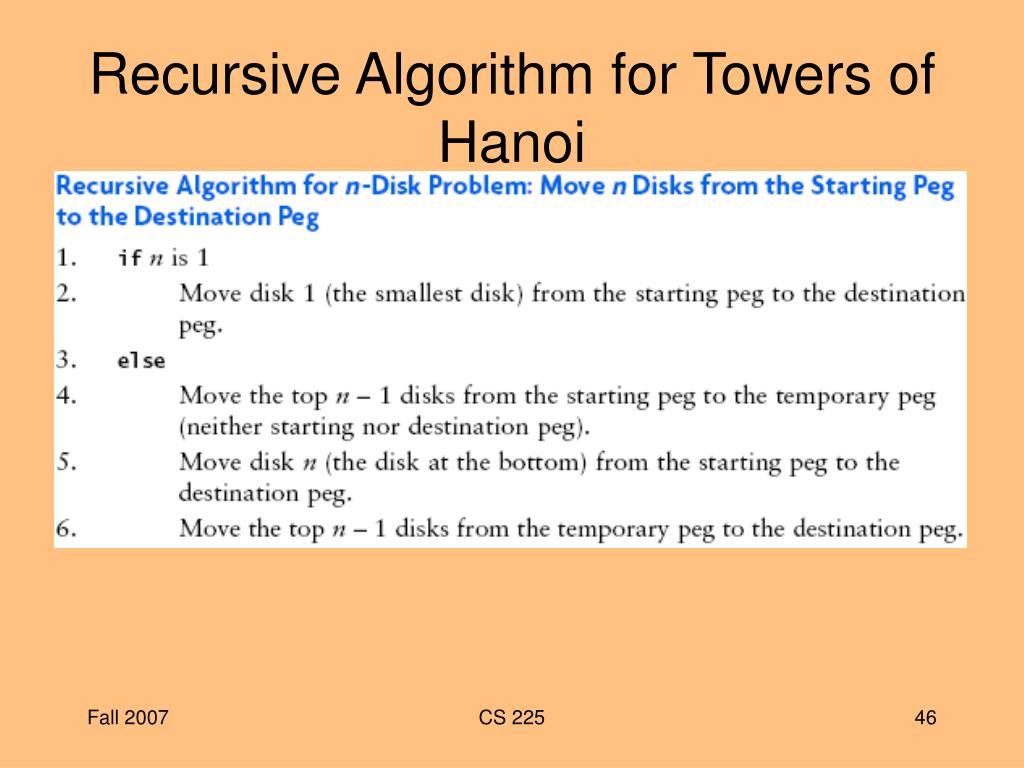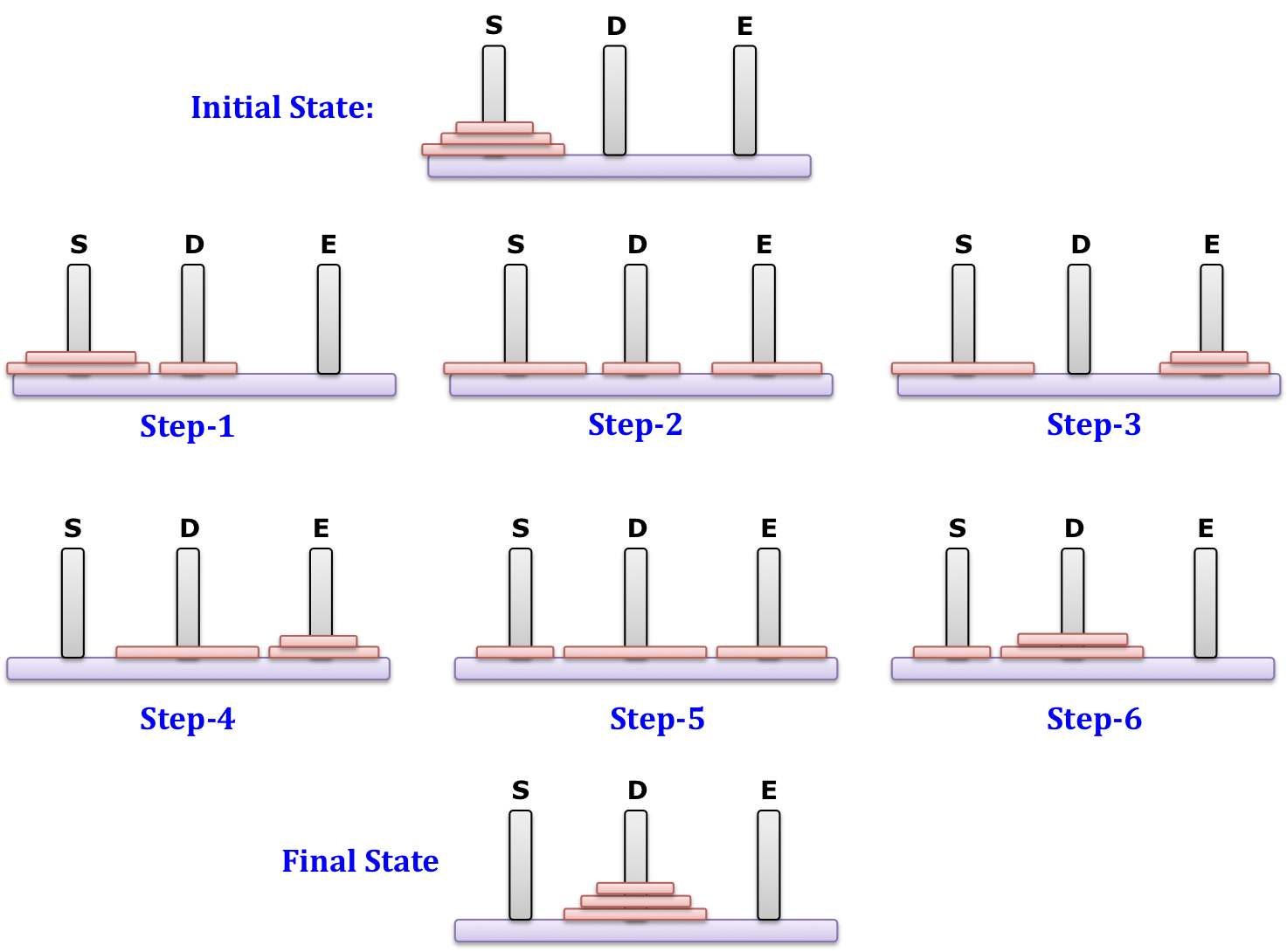

These disks are continuously moved by priests in the temple. There is a story about an ancient temple in India (Some say it’s in Vietnam – hence the name Hanoi) has a large room with three towers surrounded by 64 golden disks.

Hanoi towers recursive function license#
"Programming via Java" by By Carl Burch, used under Creative Commons Attribution-Share Alike 3.0 License license.ĬC BY-SA 4.0 Creative Commons Attribution-ShareAlike 3.0 Unported LicenseĬreative Commons Attribution 4.Tower of Hanoi game is a puzzle invented by French mathematician Édouard Lucas in 1883.

"Recursion (computer science)", Wikipedia under Creative Commons Attribution-ShareAlike 3.0 Unported License.Ĭode example, explanation and diagram for Fibonacci Recursion in Java & "Anagrams" from
Hanoi towers recursive function code#
Some excerpts and code examples taken from This work is available under a Creative Commons Attribution 4.0 International License. Original copyright notice: Copyright 2019 Jeff Erickson.

Chris Bourke used under Creative Commons Attribution 4.0 International license. This work is available under a Creative Commons Attribution 4.0 International License.Ĭhapter on Memoization is a derivative of "Algorithms" by Jeff Erickson used under Creative Commons Attribution 4.0 International license. This book is licensed under Creative Commons Attribution- ShareAlike 4.0 International License Original Content CC-BY-SA 4.0 Internationalīy Prof. We will return to this when we discuss recurrence relations a bit later.Ĭopyright (C) CodeAhoy. If we were to measure the steps by how many times a disk is moved from one peg to another, then the interesting question is how many moves this makes when given an initial set of N disks on a peg. What is not clear is how many steps this takes. Alternatively, we could just store this sequence in an array of strings that could be passed back via a parameter and then printed by the calling code. The function produces, as its output, a sequence of statements showing which disk was moved. The recursion stops when the problem size is 1. In each call the problem size is smaller. This is an example of a recursive algorithm with three recursive calls. Typedef char peg void towers ( int count, peg source, peg dest, peg spare ) Now all disks will be on peg B in the correct order.


 0 kommentar(er)
0 kommentar(er)
